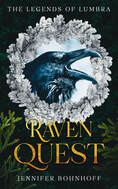Because all of these things were close by where I lived, I began thinking of the story as taking place in my own neighborhood, which has an interesting history. That history worked its way into the very heart of the story.
The history of my area begins in 1706, when a group of Spanish colonizers founded Albuquerque not far from the banks of the Rio Grande. An alluvial fan slopes eastward to the Sandia Mountains, which were a rich source of lumber, minerals, wildlife and other resources for not only the new colonizers, but for the people who had come before the Spanish, the Puebloans who lived along the river and Apache and other nomadic tribes who moved throughout the nearby plains and mountains.
Frequent raids, especially by the Apache, caused the Spanish to establish outlying land grants that acted as buffers between Albuquerque and marauding tribes. One of the first, Cañon de Carnué, was established in the pass between the Sandia and Manzano Mountains in 1763. As the villages grew, they split, creating the new villages of Tijeras, San Antonio, Manzano, Chilili, and others, that dotted the east side of Sandia Mountain. Many of these grants were given not to individuals, but to communities of people. In these grants, while individuals might own their houses, the surrounding fields and resources were shared by everyone.
Many of the settlers of these outlying land grants were Genizaros, Native Americans who had been taken captive in battles with the Spanish or stolen from their people. Genizaro lived as servants and slaves within Spanish homes, tending sheep, gardening, performing household chores and tending to their master’s children. They learned to live in the Spanish style and wore European clothing. They adopted the Spanish surnames of their masters and gained Christian first names through baptism. While they remained ethnically Indigenous, the became culturally Spanish. Unlike African slaves in the American south, Genizaros who adapted well to Spanish customs were often freed after a term of service.
These freed Genizaros were happy to settle on land grants because, while dangerous, it offered the opportunity to own land and gain social and economic autonomy. Many of these new communities combined Spanish customs with the Native customs of their youth, creating new forms of religion, language, and social practice. These communities became tight-knit and loyal to each other but often suspicious of outsiders.
Not far from where I live is the ghost town of La Madera. Founded sometime around 1849, its settlers likely came from the Las Huertas Land Grant or from the little village of San Pedro Viejo. Because of the distance and the rugged terrain, the village had to be self sustaining. Its fields grew melons, squash, pinto beans and corn. Sheep and cows grazed in meadows watered from a spring that was just up the valley from the village. In 1860, 25 families called La Madera home.
But that doesn’t mean that La Madera had no contact with the outside world. Madera is Spanish for lumber, which seems to have been the chief source of income for the village. I’ve been told that many of the vigas, or roof trusses in houses in Albuquerque’s Old Town originated in La Madera Canyon. In addition to a church and a school La Madera had a large building that served as a dance hall, stage coach stop, and post office.
When the United States seized control during the Mexican-American War, life in New Mexico began to change, sometimes in ways that were very detrimental to these small communities. Because the American system of ownership did not recognize community-based systems, many of the old grants were denied their property and the rights of communities to the resources surrounding them. Villagers could no longer be assured access to the mountain’s forests and other resources if those slopes were sold to others.
In 1875, the village was threatened when Henry Caldwell, an immigrant from Hamburg, Germany, purchased a track of land south (up stream) from La Madera, which he used for farming and livestock, both of which used water that had always flowed down to their village. The situation became even more dire in 1880, when an organization named San Pedro and Cañon del Agua Water Company built a dam 2 miles uphill from the town. 80 feet high, 300 feet long and 20 feet thick, the dam included a 15” pipe that directed the water past La Madera to the new gold, copper, and silver mines in San Pedro. Without water, the village was doomed.
Today, La Madera church is a private home and the stagecoach stop is a ruin. Except for these two buildings and a graveyard, nothing remains of the village. However, the idea of an isolated village threatened with the loss of its water by an outside power intrigued me, and the town of La Madera transformed itself in my mind into the fictional town of Lumbra.

You can preorder the ebook on Amazon for just .99. Price will go up after May 20.
You can also preorder the paperback directly from the author on her website. Purchasers will get a free bag of goodies, and book will be at a reduced price.

